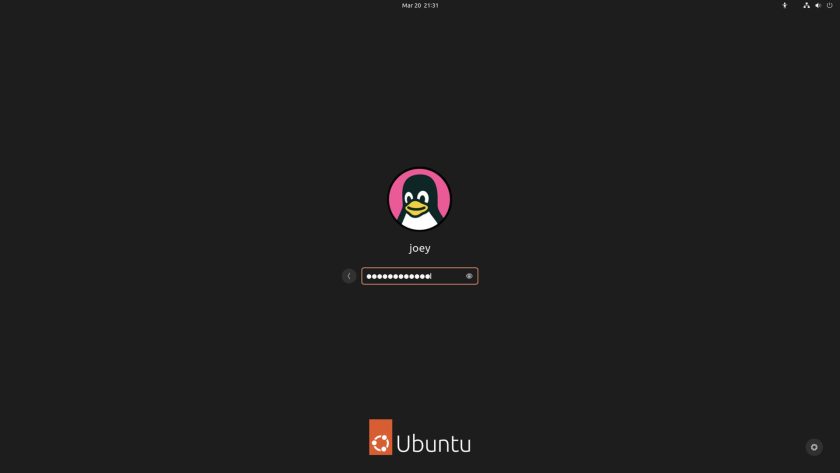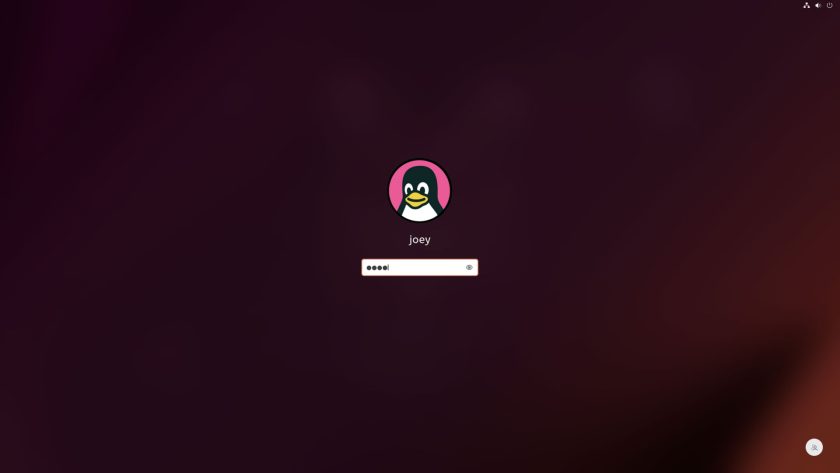On Thursday, April 20, 2023, Ubuntu 23.04 “Lunar Lobster” will be made available.
Random Information: The 38th version of the Ubuntu software is called Ubuntu 23.04.
Lunar receives 9 months’ worth of regular updates, security changes, and important improvements as a short-term version. Although that may not seem like a long time, users will be urged to update to Ubuntu 23.10 when it releases six months later.
READ ALSO: Available now: Amazon Linux 2023 (Cloud-Optimized Linux Distro)
Out with the details.
The new features, modifications, and improvements in Ubuntu 23.04 are examined in greater detail in this post. However, until April 20, everything you learn about below is still (somewhat) open to change.
Ubuntu 23.04’s New Features
New Installer

In Ubuntu 23.04, a new OS launcher is included. The new Ubuntu installer is not significantly different from the previous one in terms of functionality, but the underlying technology most definitely is! The new launcher makes use of Subiquity, Canonical’s CLI driver for Ubuntu Server, Curtin, and Flutter (a cross-platform UI framework).

Each installer page has been updated and rewritten to be as clear and succinct as possible, and the actual download now includes a newly designed slideshow that includes slideshow settings. Overall, the new magician built on Flutter leaves a favorable “impression”. The installer does occasionally stop in some places, and I do find some UI operations to be slow.
Still, it’s an upgrade, and if you don’t like it, don’t fret; on release days, you can obtain a legacy ISO that contains the old launcher.
GNOME 44
The major one is here: GNOME 44, the most recent stable version of this wildly famous open source desktop environment, is included with Ubuntu 23.04.
In GNOME 44, there are numerous novel functions. While some of the adjustments are minor and some are substantial, they all work to improve the PC experience. Keep in mind as you journey down that some of GNOME 44’s new features do appear a little… unfinished/strange when using Ubuntu’s Yaru theme (barring future updates).
There is now a bigger user avatar and a wider password input area on the login and lock displays. The theme has been tweaked subtly to make it clear to users of keypad navigation which part is active.
Although Ubuntu’s Yaru theme has somewhat ruined the Quick Settings menu’s shape and usefulness, changes are on the way, upstream GNOME designers have made some significant enhancements.
Thanks to “split” icons, it is now simpler to quickly identify which features have sub-menus. (plus, you can now open sub-menus using the keyboard). Relevant information is now relayed by new captions, such as the Wi-Fi network you’re linked to or the power mode you’re using:

The bluetooth icon now has a new submenu, thanks to GNOME devs. You can rapidly link to and disconnect from previously paired Bluetooth devices using the sub-menu. Although you must go to Settings > Bluetooth to connect new devices, they will show up here once they are paired, which is an awesome addition:

The Quick Settings panel now features a new “background apps” area in GNOME 44. Only when compatible applications are allowed to operate in the background do they show in this area on demand. I was unable to get any of the pre-installed Ubuntu applications, such as Rhythmbox, to work with the functionality, but Flatpak applications, such as Amberol, are immediately recognized:

When you explore Settings, you’ll find that many of the included sections have undergone a number of improvements, reorganizations, and additions.
The GNOME developers completely revamped the Mouse & Touchpad area, adding more settings (like mouse acceleration) and new animations showcasing different behaviors. Unfortunately, these animations are presently absent from daily versions because Ubuntu tried to make them orange.

It’s crucial to be able to locate your kernel version fast, so GNOME has added the information to the Settings page’s “About” part. Simply scroll to the bottom to find it.

The Tiling Assistant application is something that Ubuntu developers want to include in the upcoming release. There is a tiny Easter surprise before that. You can access new options in options > Ubuntu Desktop if you install the Tiling AssentAssistant application in Lunar from the Ubuntu repositories.

As I previously gushed, GNOME 44 includes an updated version of Nautilus (also known as Files), which brings back the capability to “expand” folders in list mode for quicker browsing. You must visit Preferences and switch on this (very useful) option if you want to use it because it isn’t turned on by default.

Have you ever been annoyed by the GTK file picker’s absence of a thumbnail or symbol view? Developers for GNOME have, in fact, added one! Simply select the view button whenever the GTK file picker shows to swap from list view (with its teeny small symbols) to the new thumbnail mode:

When an application is active in the Dock, the Ubuntu Dock will now show a tally badge for (all) unread alerts produced by that application. This is a new feature that app makers don’t have to expressly support; it’s not the previous Unity unread API that was used by programs like Telegram. Apps that display native alerts can also display unread icons.
This has the drawback that if you use an app (like Telegram) that, for example, displays 1 unread message, if a notice is also said, the badge will say “2,” one for the unread message, and one for the reminder about the unread message.

Ubuntu Software has been upgraded to display snap program categories (to be honest, I didn’t know it didn’t already). One annoying quirk is that when you click on the Ubuntu Software app that is attached to the Ubuntu Dock, a Snap Store app with its own dock icon (unpinned) appears. Strange behavior—what does the orange symbol represent?

Visual Changes

In addition to a New Wallpaper (obviously), Ubuntu 23.04 updates its Adwaita-based Yaru GTK and Shell motif to reflect updates from source GNOEM makers.
A new screenshot icon has been added to the Quick Settings menu in response to GNOME developers updating their own, and instead of displaying LibreOffice’s (really rather brilliant) new app icons, Ubuntu’s design team has opted to do so in favor of a new set of custom ones.
Software & Utilities
New versions of Ubuntu’s essential applications are included with this release, including:
- Mozilla Firefox 111
- Thunderbird 102
- LibreOffice 7.5
- Shotwell 0.30.17
- Remmina 1.4.29
- Transmission 3.0
The most recent version of GNOME’s new Text Editor is also present, with enhanced scroll-to-zoom, document management, and spellcheck functionality. A variety of UI improvements to popovers, menus, progress screens, search, and the preferences dialog are also included. Even though Gedit is still (as before) accessible in the repositories, I really like this.
Kernel version
Although Ubuntu 23.04 will use Linux kernel 6.2, it is still using Linux kernel 6.1 as of the time this piece was written.
When Can I Download Ubuntu 23.04?
Release date for Ubuntu 23.04 is April 20, 2023. You can get the final, safe version on this day from the official mirrors, image servers, and Ubuntu website. Additionally, Ubuntu 22.10 users will be able to update to Ubuntu 23.04.
You don’t necessarily have to wait until April 20 to test out Ubuntu 23.04. The Ubuntu 23.04 Beta will be available on March 30. As the name implies, daily versions of Ubuntu 23.04 are released each day.
SEE ALSO: pTron Bassbuds Duo TWS Earbuds with 32Hrs Total Playtime
SOURCE:
OMG! Ubuntu: Ubuntu 23.04 ‘Lunar Lobster’: Best New Features




2 Comments